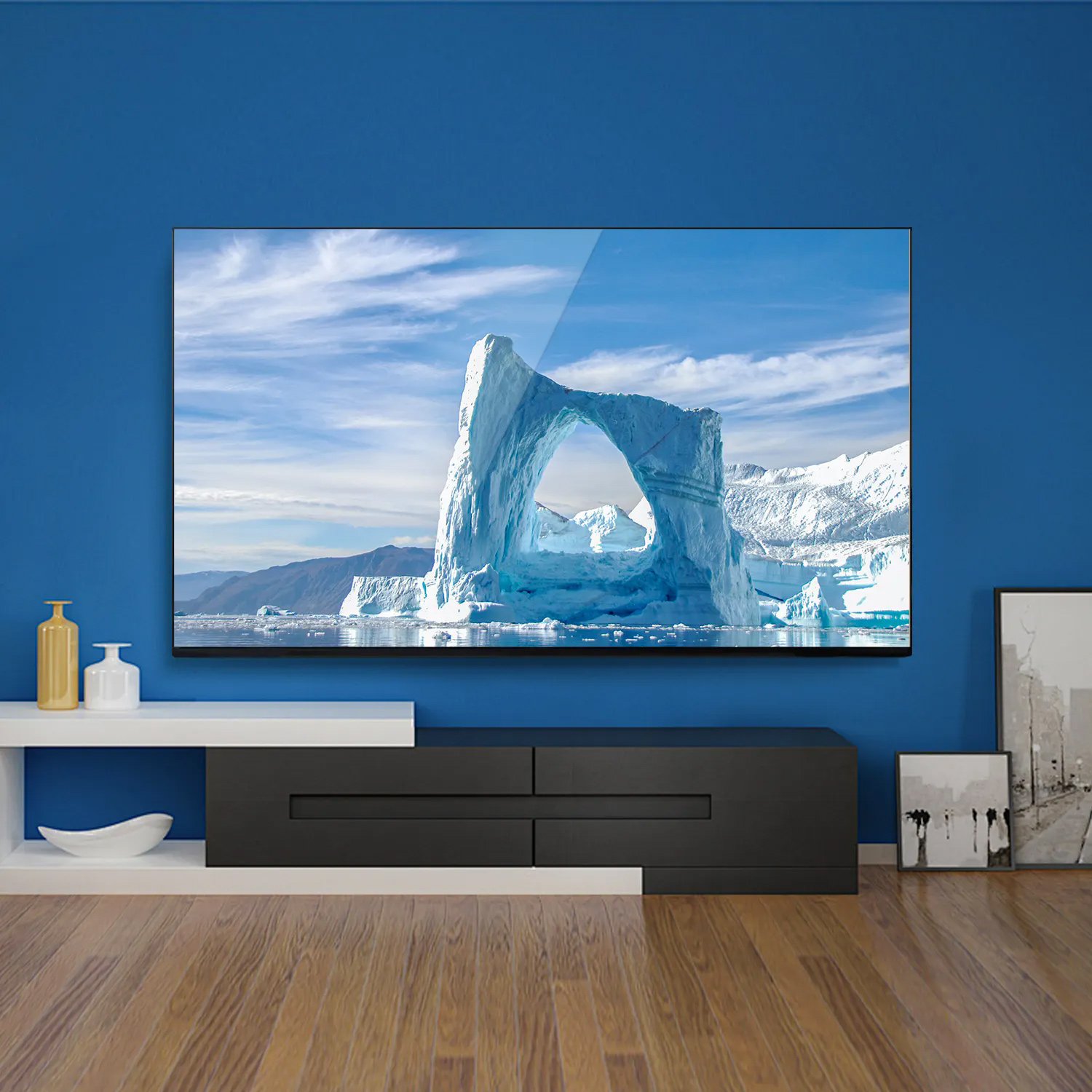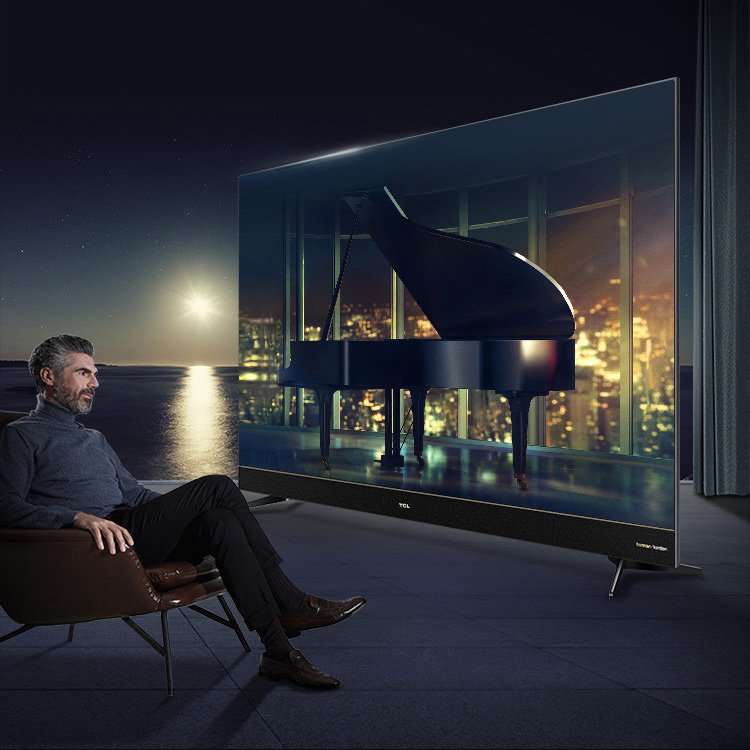The display panel is the cornerstone of a Smart TV’s visual performance, dictating image quality, energy efficiency, and user experience. Modern Smart TVs leverage cutting-edge technologies like OLED, QLED, Mini-LED, and Micro-LED, each with distinct engineering principles and trade-offs. This article dissects their technical architectures, performance metrics, and industry applications.

1. OLED: Self-Emissive Pixel Precision
OLED (Organic Light-Emitting Diode) panels operate on electroluminescence, where organic compounds emit light when an electric current flows through them. Unlike LCDs, OLEDs require no backlight, enabling per-pixel illumination control. Key innovations include:
- WRGB Subpixel Layout: LG’s OLED TVs add a white subpixel to the standard RGB matrix, boosting peak brightness (up to 1,000 nits) while maintaining color accuracy.
- Heat Sink Layers: To mitigate organic material degradation, panels integrate graphene-based heat dissipation layers, extending lifespan to ~30,000 hours.
- Black Level Performance: Infinite contrast ratios (1,000,000:1) are achieved by completely shutting off pixels, ideal for HDR content.
Challenges:
- Burn-in Risk: Static elements (e.g., news tickers) can cause permanent image retention, mitigated via pixel-shifting algorithms.
- Cost: Manufacturing 65-inch 4K OLED panels costs ~2x more than equivalent QLEDs.
2. QLED: Quantum Dot-Enhanced LCD
QLED (Quantum Dot LED) is an advanced LCD variant that uses quantum dots—nanoscale semiconductor crystals—to enhance color and brightness. Samsung’s QLED architecture comprises:
- QD Color Filter (QCF): Replaces traditional RGB filters, converting blue LED backlight into pure red/green wavelengths, achieving 100% DCI-P3 color gamut.
- Direct Full Array (DFA): Zones of up to 1,000 Mini-LEDs enable localized dimming, improving contrast to ~7,000:1.
- Anti-Reflective Coatings: Layered structures reduce glare by 98% compared to standard LCDs.
Performance Metrics:
- Peak brightness reaches 2,000–4,000 nits (vs. OLED’s ~800 nits), ideal for sunlit environments.
- Response times lag behind OLED (8ms vs. 0.1ms), causing motion blur in fast-paced gaming.
3. Mini-LED & Micro-LED: The Next Frontier
Mini-LED: These panels utilize LED chips smaller than 200μm, enabling denser backlight arrays (up to 30,000 zones in TCL’s 85″ X925 Pro). Benefits include:
- Precision Dimming: 1,000-zone Mini-LEDs achieve 0.001 nits black levels, rivaling OLED.
- Cost Efficiency: Mini-LED LCDs cost 30% less than OLEDs at 75-inch sizes.
Micro-LED: A revolutionary self-emissive technology using inorganic LEDs (10–50μm per pixel). Key advantages:
- Modularity: Panels can be tiled seamlessly (e.g., Samsung’s The Wall), supporting 8K+ resolutions.
- Durability: Inorganic materials eliminate burn-in and offer 100,000-hour lifespans.
- Brightness: 5,000+ nits for HDR reference mastering (Sony’s Crystal LED).
Challenges:
- Manufacturing Complexity: Mass-producing <50μm LEDs with zero defects remains costly (~$10,000 for a 110-inch Micro-LED TV).
- Power Consumption: 4K Micro-LEDs consume ~800W, necessitating active cooling.
4. Emerging Hybrids: QD-OLED and Meta Technologies
- QD-OLED: Samsung Display’s hybrid tech combines blue OLED emitters with quantum dot converters, offering 30% higher brightness than WRGB OLEDs while reducing power draw by 20%.
- Meta Mini-LED: Hisense’s ULED X integrates AI-driven backlight scanning (240Hz) and nanometer-level optical films to minimize blooming.
5. Panel Metrics Comparison
| Technology | Contrast Ratio | Peak Brightness | Response Time | Color Gamut |
| OLED | ∞:1 | 800–1,200 nits | 0.1ms | 99% DCI-P3 |
| QLED | 7,000:1 | 2,000–4,000 nits | 8ms | 100% DCI-P3 |
| Mini-LED | 100,000:1 | 2,000–4,000 nits | 5ms | 95% DCI-P3 |
| Micro-LED | ∞:1 | 5,000+ nits | 0.01ms | 110% BT.2020 |
Future Directions
- Printed OLED: Roll-to-roll manufacturing aims to cut production costs by 40%.
- Nano-ILA: Panasonic’s nanoparticle alignment tech enhances LCD viewing angles to 178°.
- Energy Recovery: EU-mandated energy labels (2027) drive adoption of GaN-based LED drivers, reducing power waste by 25%.
Conclusion
Smart TV display technologies are locked in a multi-path competition, with OLED dominating contrast and response times, QLED excelling in brightness, and Micro-LED promising scalability. As hybrid architectures and manufacturing breakthroughs emerge, the convergence of affordability, durability, and performance will define the next era of visual immersion.








